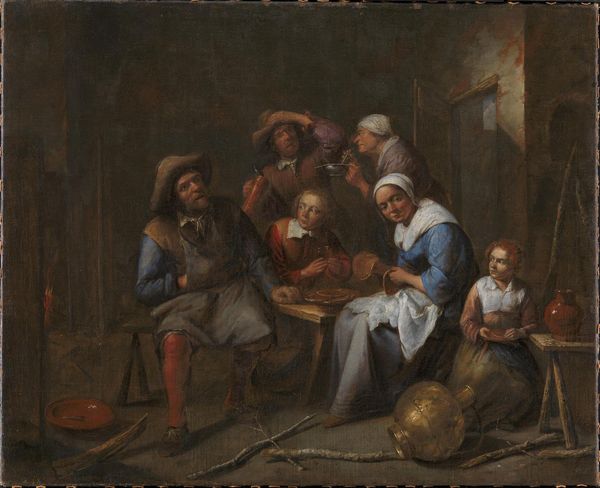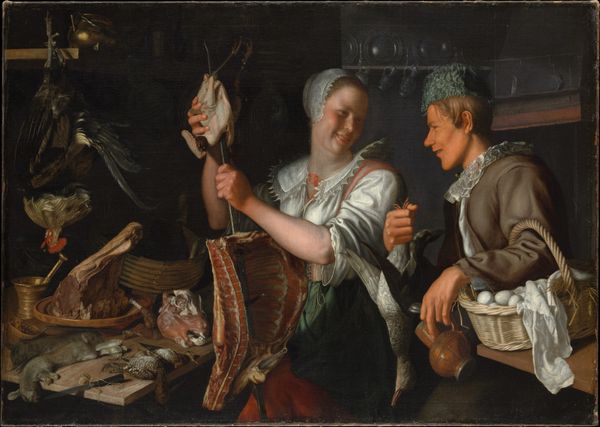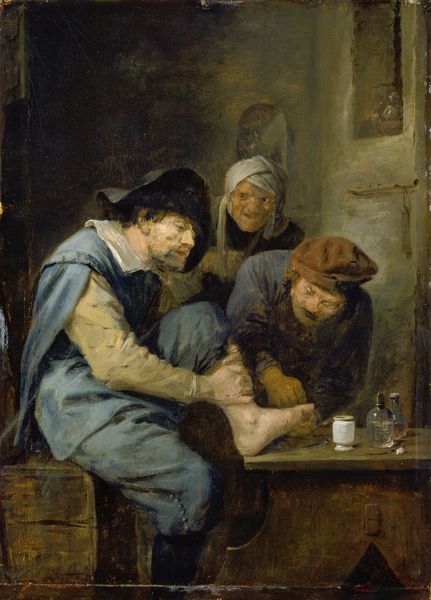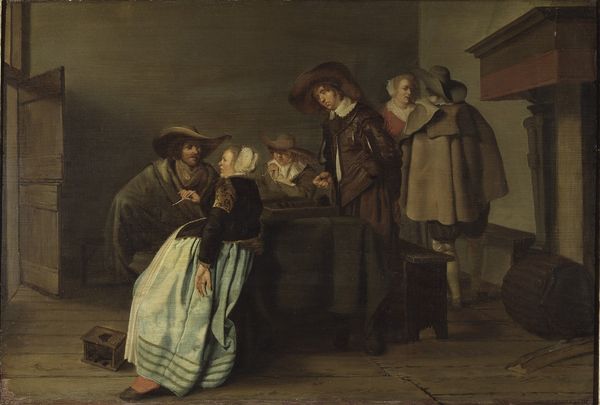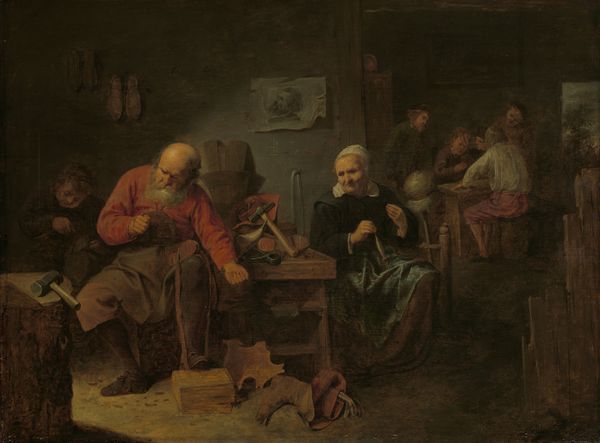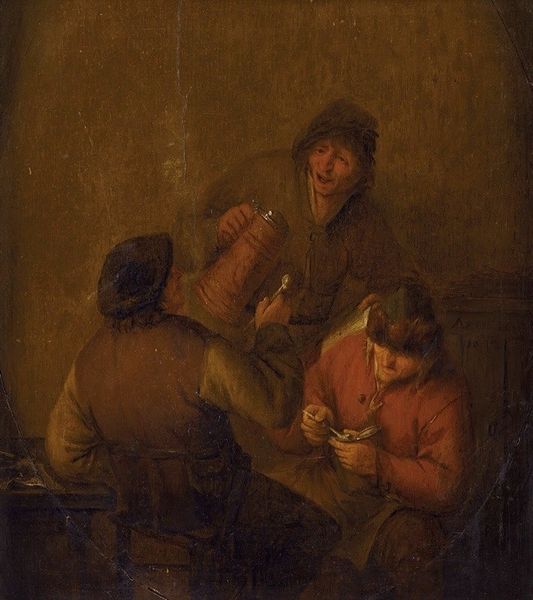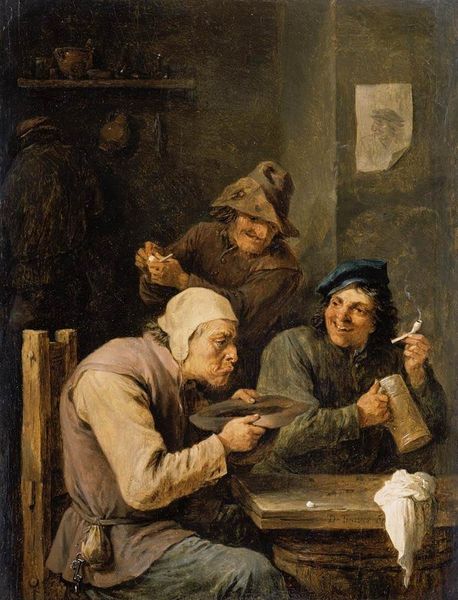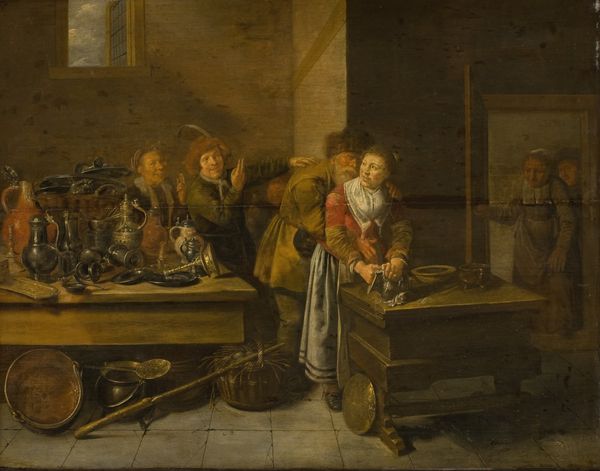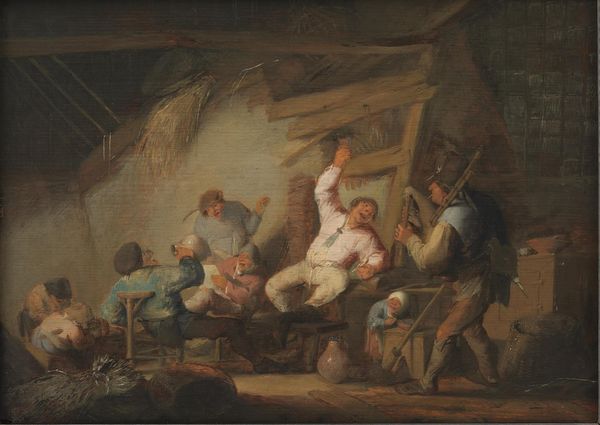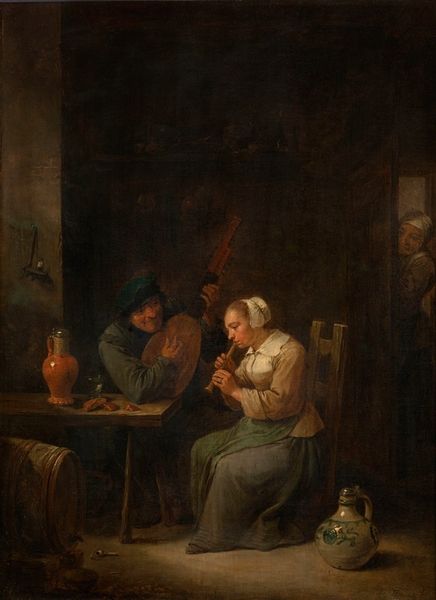
oil-paint
#
portrait
#
baroque
#
oil-paint
#
genre-painting
Dimensions: 64 cm (height) x 85 cm (width) (Netto)
Joos van Craesbeeck’s “Smokers” was painted with oil on canvas some time in the 17th century. Craesbeeck, who was a baker as well as a painter, often depicted scenes of working-class life, revelry and tavern interiors, and this painting is a great example. See how he uses the oil paint to give a sense of the figures' robust presence, but also to highlight the rough textures of their clothing and skin. This is not just about the artistry of painting, but about conveying the materiality of everyday life. The act of smoking itself, and the objects associated with it - pipes, tobacco, and drinking vessels – speak to a culture of consumption and leisure, which was becoming more widespread in this period. Tobacco was, of course, one of the key drivers of global trade at this time, and fueled colonial economies. Craesbeeck doesn't shy away from showing the realities of life, and how it relates to production, labor, and class. Paying attention to the material qualities of paintings, and the social context from which it emerged, helps us move beyond the surface appearance, and to a more insightful understanding of the artwork’s cultural significance.
Comments
No comments
Be the first to comment and join the conversation on the ultimate creative platform.
